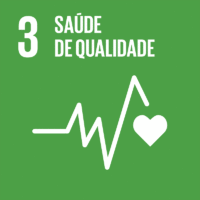Ciência_Iscte
Publicações
Descrição Detalhada da Publicação
Maternal mental health in the workplace (MAMH@WORK): A protocol for promoting perinatal maternal mental health and wellbeing
Título Revista
International Journal of Environmental Research and Public Health
Ano (publicação definitiva)
2021
Língua
Inglês
País
Suíça
Mais Informação
Web of Science®
Scopus
Google Scholar
Esta publicação não está indexada no Overton
Abstract/Resumo
Women are exposed to increased burden of mental disorders during the perinatal period: 13–19% experience postpartum depression. Perinatal psychological suffering affects early mother-child relationship, impacting child’s emotional and cognitive development. Return-to-work brings additional vulnerability given the required balance between parenting and job demands. The MAternal Mental Health in the WORKplace (MAMH@WORK) project aims to develop and evaluate the effectiveness of a brief and sustainable intervention, promoting (a) maternal mental health throughout pregnancy and first 12 months after delivery, and (b) quality of mother–child interactions, child emotional self-regulation, and cognitive self-control, while (c) reducing perinatal absenteeism and presenteeism. MAMH@WORK is a three-arm randomized controlled trial. A short-term cognitive-behavioral therapy-based (CBT-based) psychoeducation plus biofeedback intervention will be implemented by psychiatrists and psychologists, following a standardized procedure manual developed after consensus (Delphi method). Participants (n = 225, primiparous, singleton pregnant women at 28–30 weeks gestational age, aged 18–40 years, employed) will be randomly allocated to arms: CBT-based psychoeducation intervention (including mindfulness); psychoeducation plus biofeedback intervention; and control. Assessments will take place before and after delivery. Main outcomes (and main tools): mental health literacy (MHLS), psychological wellbeing (HADS, EPDS, KBS, CD-RISC, BRIEF COPE), quality of mother–child interaction, child–mother attachment, child emotional self-regulation and cognitive self-control (including PBQ, Strange Situation Procedure, QDIBRB, SGS-II, CARE-Index), job engagement (UWES), and presenteeism. Intention-to-treat and per-protocol analyses will be conducted; Cohen’s d coefficient, Cramer’s V and odds ratio will be used to assess the effect size of the intervention. MAMH@WORK is expected to contribute to mental health promotion during the perinatal period and beyond. Its results have the potential to inform health policies regarding work–life balance and maternal mental health and wellbeing promotion in the workplace.
Agradecimentos/Acknowledgements
--
Palavras-chave
Biofeedback,Cognitive self-control,Emotional self-regulation,Mental health literacy,Perinatal psychological wellbeing,Postpartum depression,Program evaluation,Psychoeducation,Work–life balance
Classificação Fields of Science and Technology
- Ciências da Saúde - Ciências Médicas
Registos de financiamentos
| Referência de financiamento | Entidade Financiadora |
|---|---|
| UIDB/04295/2020 | Fundação para a Ciência e a Tecnologia |
| UIDP/04295/2020 | Fundação para a Ciência e a Tecnologia |
| UIDB/03126/2020 | Fundação para a Ciência e a Tecnologia |
Contribuições para os Objetivos do Desenvolvimento Sustentável das Nações Unidas
Com o objetivo de aumentar a investigação direcionada para o cumprimento dos Objetivos do Desenvolvimento Sustentável para 2030 das Nações Unidas, é disponibilizada no Ciência_Iscte a possibilidade de associação, quando aplicável, dos artigos científicos aos Objetivos do Desenvolvimento Sustentável. Estes são os Objetivos do Desenvolvimento Sustentável identificados pelo(s) autor(es) para esta publicação. Para uma informação detalhada dos Objetivos do Desenvolvimento Sustentável, clique aqui.

 English
English



